
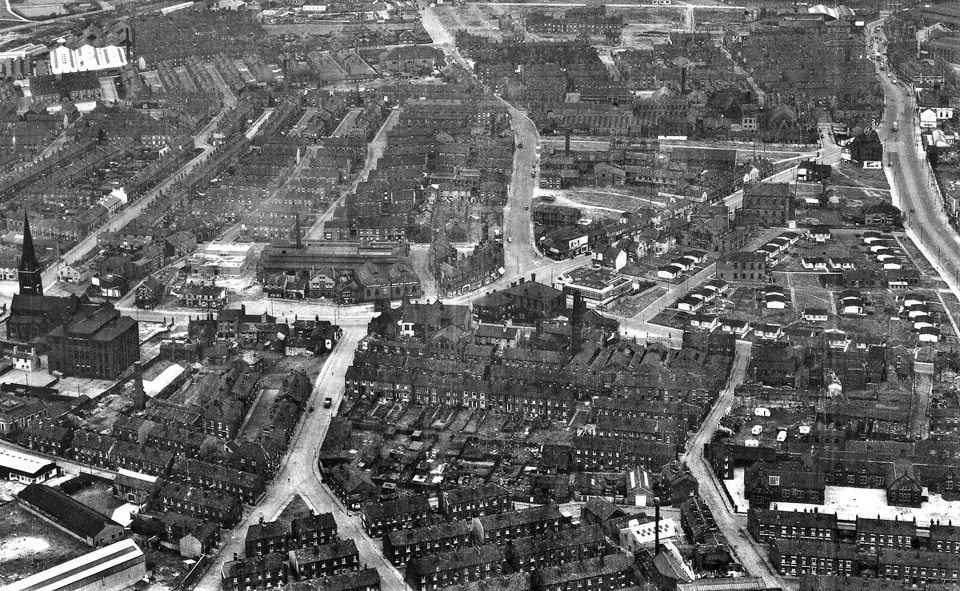



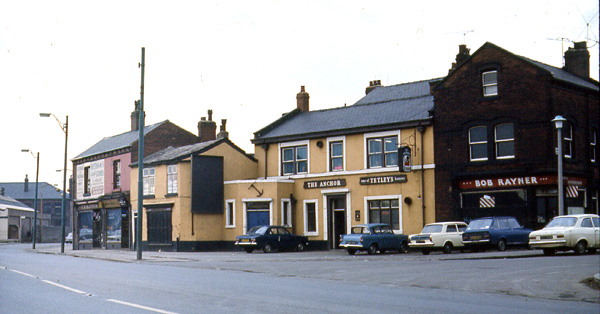
The world's first commercially successful steam locomotives ran on the Middleton Railway through Hunslet in 1812, long before George Stephenson's famous Locomotion and Rocket were built.
In 1838 the famous Lion locomotive (It starred in the 1952 film "The Titfield Thunderbolt") was built in Hunslet and supplied to the Liverpool and Manchester Railway.
It heralded the establishment and growth of locomotive building in Hunslet which made it "one of the most concentrated locomotive centres of the railway world" at the height of the country's railway building boom in the 1840s and 50s.
In 1838 the famous Lion locomotive (It starred in the 1952 film "The Titfield Thunderbolt") was built in Hunslet and supplied to the Liverpool and Manchester Railway.
It heralded the establishment and growth of locomotive building in Hunslet which made it "one of the most concentrated locomotive centres of the railway world" at the height of the country's railway building boom in the 1840s and 50s.


Kelly's Directory of 1888 said "Hunslet, a populous suburb of Leeds, is a township bounded on the east by the river Aire and on the west by Holbeck, extending southward from the Christ Church at the boundary of Leeds township to Thwaitegate and Woodhouse Hill, nearly 2 miles south of Briggate." The river and canal in the east, and cemetery to the south are obvious boundaries, but how far west does it go before it merges into Beeston? The old West Hunslet Ward covered much of what is now Beeston. Go to the Key Map page to see my idea of Hunslet's boundary, and let me know if you think differently.
If you lived in Hunslet before most of those "blackened terraces" were demolished in the 1960s, you'll remember the often cold, draughty houses with outside toilets, the long hours spent at physically demanding work in the home or in paid jobs, poor health, soot and smog.... but also a richness and variety that Keith Waterhouse describes so vividly.
There have been many books written about communities in different parts of Leeds, but there is surprisingly little available that brings Hunslet's story to life. Yet back in 1834 Parson's history said that “This township now contains as many inhabitants as many of the cities and cathedral towns of the kingdom, and it is superior to them in wealth and intrinsic importance.”
This website celebrates the Hunslet we knew up to the 1970s. Using maps, photos and words, it reminds us what life was like. However, it's just a start, a way of stirring your memories.
There have been many books written about communities in different parts of Leeds, but there is surprisingly little available that brings Hunslet's story to life. Yet back in 1834 Parson's history said that “This township now contains as many inhabitants as many of the cities and cathedral towns of the kingdom, and it is superior to them in wealth and intrinsic importance.”
This website celebrates the Hunslet we knew up to the 1970s. Using maps, photos and words, it reminds us what life was like. However, it's just a start, a way of stirring your memories.

"I went willingly: the dental clinic was deep in the heart of my beloved Hunslet, and I would have had all my blackened teeth extracted one by one for one more visit to those blackened terraces."
© City Lights, Keith Waterhouse (1994)
"Hunslet had....a rich mixture, which, with its accompanying mishmash of street ornamentation, included small factories and great foundries, shops, warehouses, offices, schools, swimming baths and wash houses, public libraries, churches, chapels and mission halls, pubs, recreation grounds, coke dumps, scrap yards, coal staithes, police stations, fire stations, cinemas, billiard halls, cemeteries, railway shunting yards, dog racing tracks, football grounds, breweries, workmen's cafes, savings banks, temperance hotels, garages, stables, hairdressing salons, gasworks, Territorial Army barracks, tailoring establishments, steam laundries, allotments and even a smallholding or two with pigs and hens, all within the same crowded square mile."
© City Lights, Keith Waterhouse (1994)
"Hunslet had....a rich mixture, which, with its accompanying mishmash of street ornamentation, included small factories and great foundries, shops, warehouses, offices, schools, swimming baths and wash houses, public libraries, churches, chapels and mission halls, pubs, recreation grounds, coke dumps, scrap yards, coal staithes, police stations, fire stations, cinemas, billiard halls, cemeteries, railway shunting yards, dog racing tracks, football grounds, breweries, workmen's cafes, savings banks, temperance hotels, garages, stables, hairdressing salons, gasworks, Territorial Army barracks, tailoring establishments, steam laundries, allotments and even a smallholding or two with pigs and hens, all within the same crowded square mile."
"... here was a neighbourhood of great liveliness. Even on a Sunday afternoon when just about everything was closed, there were still people abroad, chatting at street corners or in doorways, looking in shop windows, waiting at tram shops or drifting towards Hunslet Moor for a constitutional around the cinders. The dingy streets were made even livelier by their richness in what conservationists now call street furniture - public clocks; shops signs suspended from wrought-iron brackets; glass pavement canopies; white blinds painted with the names of grocers, chemists and drapers; barbers' poles; iron bollards; newspaper placards and lurid cinema posters, and enamelled advertisements for Mazawattee Tea and Bisto, and the names of Turog and Hovis picked out in golden letters over the bakers' shops, and every blank wall plastered with fly-posters or painted with huge slogans - "Uncle Joe's Mint Balls. They Keep You All Aglow"; and a medley of overhanging lamps and pub signs, horse troughs, statues of benefactors, public lavatories resembling family tombs, and, surpassing all, a great ornamental drinking fountain to rival the Albert Memorial."
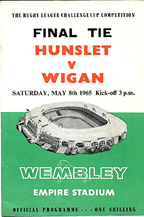
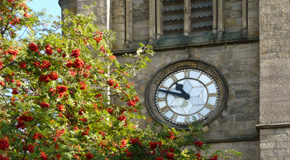
The Places section looks at particular areas in Hunslet. I've marked places of interest on detailed maps, and there are photo galleries and personal memories from Hunslet people. Go to the Key Map to see what's currently available.
The daily life section is about how we used to live. From here you can read about the home, industry, entertainment, games and sport, pubs and clubs, schools and religion, and shops.
This section traces Hunslet's history from Domesday to 1700, the start of industrialisation 1700 to 1800, rapid growth 1800-1900, and its continued expansion from 1900 onwards. There's also a page on Hunslet's few remaining Listed buildings.
"You've been chumping and you're black-bright! Frame yourself and have a swill". The Words section will help you translate. Can you add any more dialect words?
It also tells us how the word "Hunslet" might have originated.
It also tells us how the word "Hunslet" might have originated.
I've used many of my own photos (from the 1960s, 1970s and in 2009), but the website could not have been made in this form without material from many other sources. I've drawn particularly on the Leodis photo archive operated by Leeds Library and Information Services. It contains hundreds of old Hunslet photos and is well worth exploring. Many of the photos have interesting recollections attached from Hunslet people. The staff at the library have also been helpful in pointing me to relevant maps and documents. I have used extracts from many documents, too many to mention here: see the lists of references throughout the site.
Where necessary, I have attempted to contact copyright owners of images and text, but not always successfully. I am happy to make amendments to the site if any such owner should wish.
Where necessary, I have attempted to contact copyright owners of images and text, but not always successfully. I am happy to make amendments to the site if any such owner should wish.
Image copyright of Leeds Library and Information Services
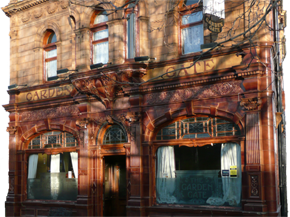
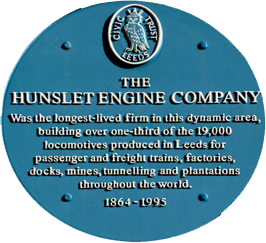
The Anchor pub, with Beetham's pawnbrokers on left (photo 1974)
New Pepper Road in 1964
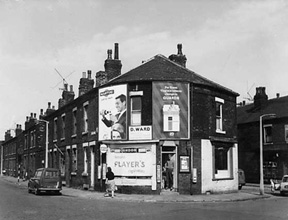
The Garden Gate - a listed building

What are your stories, your memories of places, people, work and play? If you can put them into words or pictures they could be added here.
My name is Chris Tebbutt. I was born in 1949 in the Peppers and went to Low Road Primary and Cockburn High Schools. Although a lot of research has gone into this site it still only scratches the surface. I need your help to improve it. What do you remember about old Hunslet? Let me know and I'll try and put it on this site so we can all remember it better. Let me know if I've got something wrong and I'll correct it. Tell your relations and friends about it. The more people we can get to add material the better it will be. Contact me at [email protected]
My name is Chris Tebbutt. I was born in 1949 in the Peppers and went to Low Road Primary and Cockburn High Schools. Although a lot of research has gone into this site it still only scratches the surface. I need your help to improve it. What do you remember about old Hunslet? Let me know and I'll try and put it on this site so we can all remember it better. Let me know if I've got something wrong and I'll correct it. Tell your relations and friends about it. The more people we can get to add material the better it will be. Contact me at [email protected]
You are here: Home
I've had many people asking me questions I don't know the answer to. They are often seeking information about people, places or firms because they are researching their family history or local history, or are simply keen to remember and learn more about Hunslet. On the Answers needed page you can have a look through the questions and, if you have some information, contact me.
Since the website was launched many people have responded by writing down their memories. These are scattered throughout the website. You can go to the Browse page to see a list of all of them under "Memories" and link to any one of them from there.
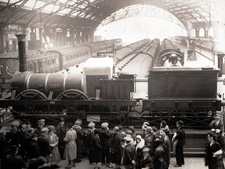
Lion on display at Liverpool Lime Street station before the Second World War
Image copyright of Museum of Liverpool
Image copyright of Museum of Liverpool
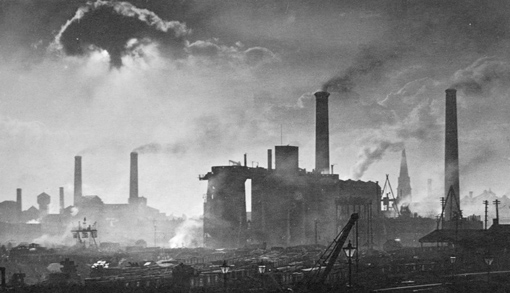
The Leeds Steelworks, with Hunslet Parish Church behind the fumes
Photo from Keith Greenhalf
Photo from Keith Greenhalf

Old Hunslet
Have you ever been to Hunslet, or walked down Hunslet Lane,
Mid the dirt and grime of Church Street, or heard the folks complain.
Have you seen the little houses with breadcakes on the door,
And found a real Leeds welcome with the folks who live next door.
Have you been to Stillhouse yard on a Friday night,
To fix the kids with boots or clothes by a flickering paraffin light.
Have you walked past Tolston's tripe shop and along to Penny Hill,
Or had a drink in the Garden Gate - the pub that stands there still.
Have you ever been on Hunslet Moor, or in the Anchor Pub,
Or visited the old Swan Junction or been in the Liberal Club.
Have you ever been down Balm Road where the steelworks used to lie.
Now they're pulling down old Hunslet and we must watch it die
When my mum died I found she had kept this poem.
I don't know who wrote it - Sheila Gamblin
Have you ever been to Hunslet, or walked down Hunslet Lane,
Mid the dirt and grime of Church Street, or heard the folks complain.
Have you seen the little houses with breadcakes on the door,
And found a real Leeds welcome with the folks who live next door.
Have you been to Stillhouse yard on a Friday night,
To fix the kids with boots or clothes by a flickering paraffin light.
Have you walked past Tolston's tripe shop and along to Penny Hill,
Or had a drink in the Garden Gate - the pub that stands there still.
Have you ever been on Hunslet Moor, or in the Anchor Pub,
Or visited the old Swan Junction or been in the Liberal Club.
Have you ever been down Balm Road where the steelworks used to lie.
Now they're pulling down old Hunslet and we must watch it die
When my mum died I found she had kept this poem.
I don't know who wrote it - Sheila Gamblin
A 1951 aerial photo of Hunslet, showing St.Mary's Church left, and Church Street/Waterloo Road centre.
